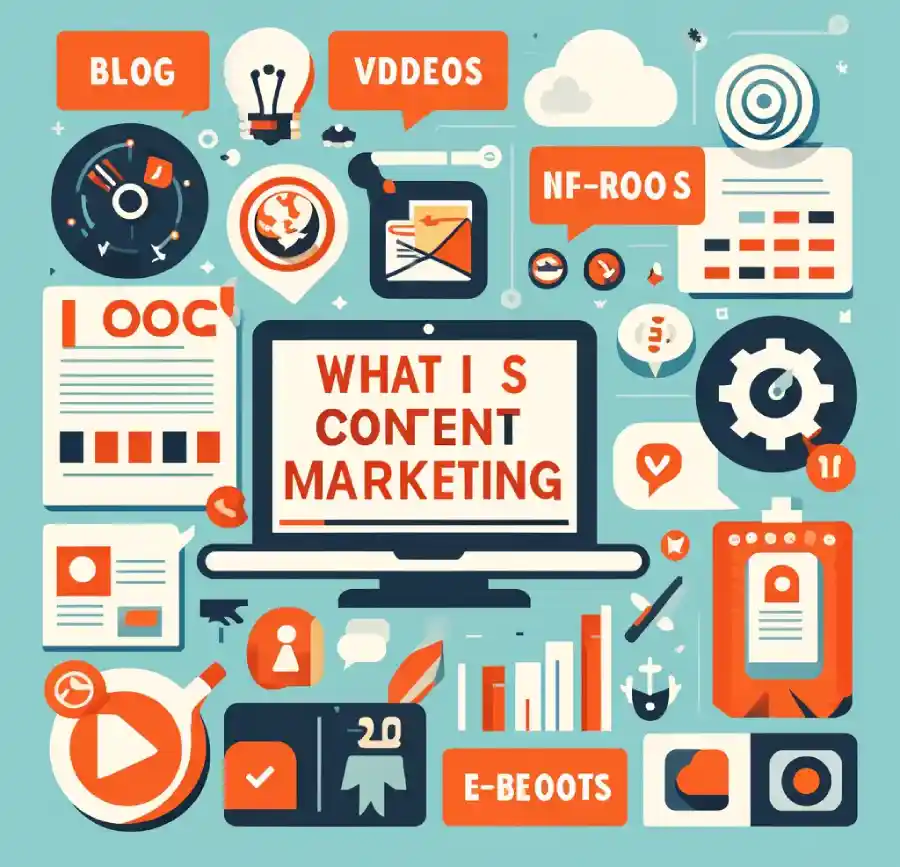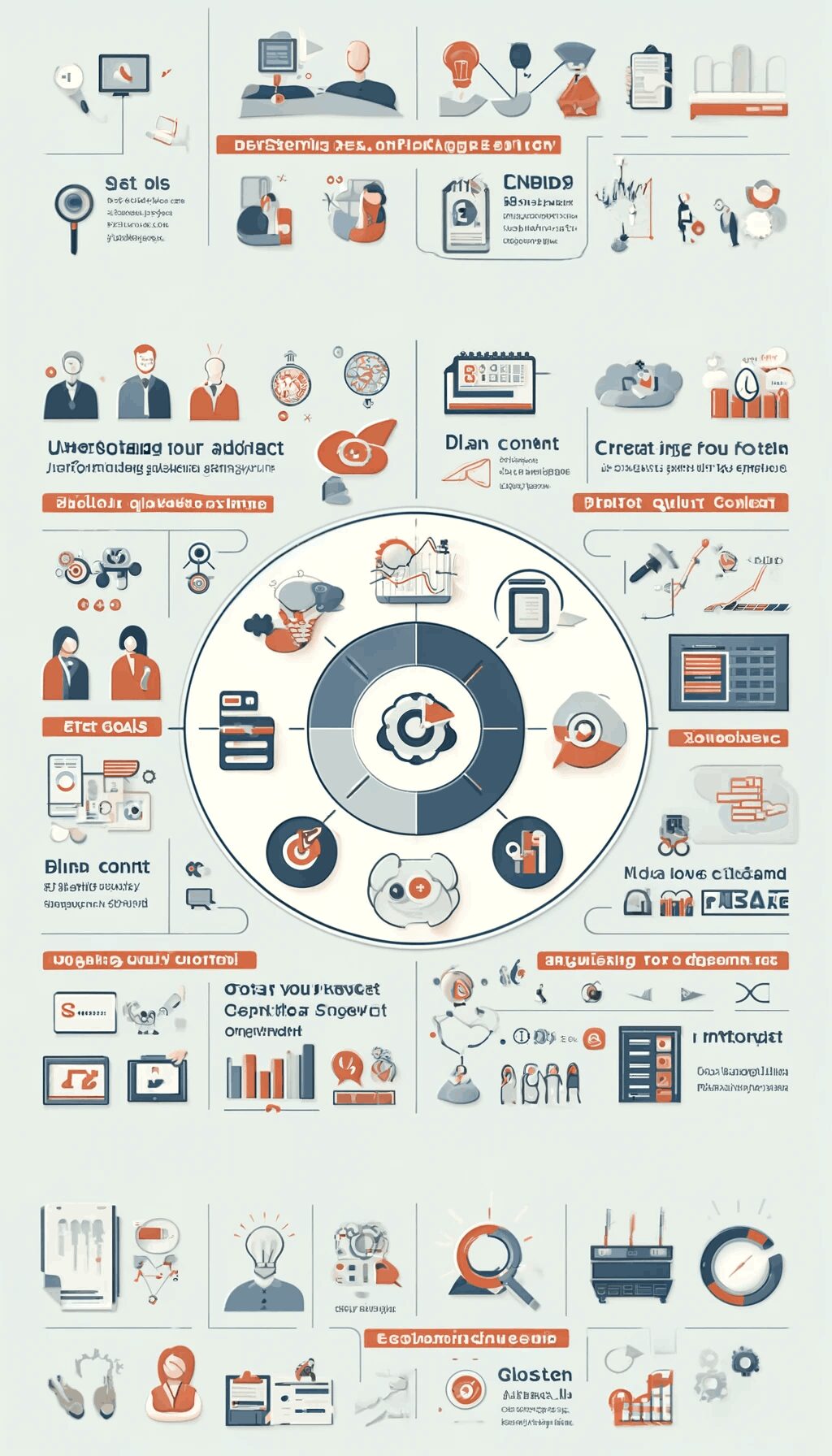
In today’s digital age, content marketing has become an essential strategy for businesses aiming to engage their audience, build brand awareness, and drive traffic to their websites. But what exactly is content marketing? By exploring the keyword “site: webfx.com “”what is content marketing”””, we delve into the intricacies of this powerful marketing tool and its significance in the modern business landscape. This article will provide a comprehensive guide to understanding content marketing, its benefits, and effective strategies to implement it successfully.
Key Takeaways
- Definition and significance of content marketing
- Key strategies for effective content marketing
- Benefits of content marketing for businesses
Understanding “site: webfx.com “”what is content marketing”””

Definition and Overview
Content marketing is a strategic approach focused on creating and distributing valuable, relevant, and consistent content to attract and retain a clearly defined audience — ultimately driving profitable customer action. As per the keyword “site: webfx.com “”what is content marketing””” it is essential to comprehend its historical context and evolution to appreciate its modern applications fully.
Historically, content marketing dates back to the early 20th century when brands like Michelin and John Deere began producing valuable content for their customers. Today, it encompasses various forms, including blogs, videos, infographics, e-books, and podcasts.
Types of Content Marketing
- Blog Posts: Regularly updated articles on websites aimed at engaging readers with informative or entertaining content.
- Videos: Visual content that can range from tutorials and product demos to behind-the-scenes glimpses and customer testimonials.
- Infographics: Visual representations of information or data designed to make complex information easily digestible.
- E-books and Whitepapers: In-depth publications on specific topics that provide valuable insights and are often used as lead magnets.
- Podcasts: Audio content that allows businesses to reach their audience through engaging discussions, interviews, or storytelling.
Content Marketing vs. Traditional Marketing
Traditional marketing focuses on direct promotion and selling of products, while content marketing emphasizes providing valuable content to build a relationship with the audience. Content marketing nurtures trust and authority, often leading to higher engagement and conversion rates.
The Importance of Content Marketing
Building Brand Awareness
Content marketing is instrumental in building brand awareness. By consistently creating and sharing valuable content, businesses can reach a wider audience and establish themselves as industry leaders. Creating valuable content helps in making your brand recognizable and trustworthy.
Engaging Your Audience
Engagement is a key aspect of content marketing. Techniques to keep your audience engaged include interactive content, personalized communication, and regular updates. Audience interaction and feedback are crucial for refining your content strategy and improving engagement rates.
According to a study by Demand Metric, content marketing costs 62% less than traditional marketing and generates about three times as many leads.
Driving Traffic and Conversions
Effective content marketing drives traffic to your website by improving search engine rankings and attracting visitors through engaging content. By converting visitors into leads and customers, businesses can achieve their marketing goals more efficiently.
HubSpot reports that businesses that blog regularly see 55% more website visitors and 97% more inbound links than those that don’t.
Key Components of a Content Marketing Strategy
Setting Clear Goals
Setting clear and achievable goals is fundamental to a successful content marketing strategy. Examples of content marketing goals include increasing brand awareness, generating leads, boosting website traffic, and enhancing customer engagement.
Audience Research and Segmentation
Understanding your target audience is crucial for creating relevant content. Conducting thorough audience research and segmentation helps in developing buyer personas that guide your content creation process.
Content Creation and Planning
Developing a content calendar ensures a steady flow of content. Planning involves determining the types of content to create, the topics to cover, and the channels for distribution. This structured approach ensures consistency and relevance.
Content Distribution
Effectively distributing content is as important as creating it. Channels for content distribution include social media platforms, email marketing, SEO, and partnerships. Leveraging these channels maximizes reach and engagement.
Measuring and Analyzing Results
Measuring the success of your content marketing efforts is essential for continuous improvement. Key metrics to track include website traffic, engagement rates, lead generation, and conversion rates. Tools like Google Analytics and HubSpot are invaluable for analyzing these metrics.
Effective Content Marketing Techniques
Storytelling
Storytelling is a powerful tool in content marketing. It helps in creating emotional connections with the audience. Successful storytelling campaigns often use relatable narratives that resonate with the audience, making the content more memorable and impactful.
According to a study by OneSpot, 92% of consumers want brands to make ads that feel like a story.
SEO and Content Marketing
SEO plays a critical role in content marketing by ensuring that your content is discoverable by search engines. Optimizing content for relevant keywords, including site: webfx.com “what is content marketing,” enhances visibility and attracts organic traffic.
User-Generated Content
User-generated content (UGC) involves encouraging your audience to create and share content related to your brand. UGC serves as social proof and can significantly boost credibility and trust.
Interactive Content
Interactive content, such as quizzes, polls, and surveys, engages users more effectively than static content. It encourages participation and can provide valuable insights into audience preferences and behavior.
Tools and Resources for Content Marketing
Content Management Systems (CMS)
Content management systems like WordPress and HubSpot facilitate content creation, management, and distribution. They provide robust features for scheduling, editing, and publishing content.
SEO Tools
SEO tools like Ahrefs and SEMrush are essential for keyword research, competitive analysis, and optimizing content for search engines. These tools help in identifying the best keywords to target, including “site: webfx.com “”what is content marketing”””.
Analytics Tools
Analytics tools, such as Google Analytics and HubSpot, are vital for tracking and analyzing content performance. They provide insights into metrics like website traffic, user behavior, and conversion rates, enabling data-driven decision-making.
Businesses using marketing analytics tools are 60% more likely to report their marketing strategy as effective (source: HubSpot).
Design Tools
Design tools like Canva and Adobe Spark are crucial for creating visually appealing content. They offer templates and design elements that make it easy to produce high-quality graphics, infographics, and videos.
Case Studies and Success Stories
Successful Content Marketing Campaigns
Analyzing successful content marketing campaigns provides valuable lessons. For example, the Michelin Guide, which started as a marketing effort to promote tire sales, became a renowned authority in the culinary world. These case studies highlight the potential long-term benefits of content marketing.
Real-Life Examples
Companies like HubSpot and Buffer have effectively used content marketing to grow their brands. HubSpot’s extensive library of educational content has positioned it as a thought leader in inbound marketing, while Buffer’s transparent approach and valuable blog content have built a loyal following.
Common Challenges and How to Overcome Them
Creating High-Quality Content Consistently
Maintaining content quality and consistency can be challenging. Establishing a content calendar, delegating tasks, and using tools for content planning and collaboration can help overcome this challenge.
Tip: Use project management tools like Trello or Asana to keep track of your content creation process and deadlines.
Measuring ROI
Measuring the return on investment (ROI) of content marketing efforts can be complex. Focusing on key metrics such as lead generation, conversion rates, and customer acquisition costs can provide a clearer picture of ROI.
Staying Up-to-Date with Trends
The content marketing landscape is constantly evolving. Staying informed about the latest trends and technologies is crucial. Subscribing to industry blogs, attending webinars, and participating in professional networks can help keep you updated.
Future of Content Marketing
Emerging Trends
Content marketing is continuously evolving, with emerging trends such as AI-generated content, personalized marketing, and voice search optimization. These trends are shaping the future of content marketing, offering new opportunities for engagement and growth.
By 2022, 50% of all online searches will be voice-based (source: ComScore).
Adapting to Changes
Adapting to changes in the content marketing plan requires flexibility and innovation. Businesses must be willing to experiment with new strategies and technologies to stay ahead of the competition and meet the evolving needs of their audience.
FAQs
“site: webfx.com “”what is content marketing example”””
Content marketing uses different types of content to engage and inform audiences. Here are some examples:
- Blog Posts: An eco-friendly company writes about sustainable living, sharing tips and promoting their products.
- Infographics: A financial firm creates easy-to-read charts to explain complex topics.
- Videos: A fitness brand makes workout videos, showing how to use their products.
- E-books: A marketing agency offers a free e-book on social media strategies to attract potential clients.
- Case Studies: A software company shares stories about how their product helped clients succeed.
- Podcasts: A business consultant hosts a podcast discussing industry trends and interviewing experts.
- Social Media Posts: A fashion brand posts behind-the-scenes content, creating a personal connection with followers.
These examples show how content marketing can be used in different ways to engage audiences and promote products or services.
“site: webfx.com “”what is content marketing strategy”””
A content marketing strategy is a plan for using content to achieve marketing goals. Here’s what it includes:
- Set Goals: Decide what you want to achieve, like more website traffic or increased sales.
- Know Your Audience: Understand who your audience is and what they care about.
- Audit Your Content: Check what content you already have and see what works and what doesn’t.
- Plan Your Content: Decide what types of content to create (like blogs, videos, or social media posts) and where to share them.
- Create Quality Content: Make content that is valuable and interesting to your audience.
- Share Your Content: Post your content on your website, social media, and other channels.
- Optimize for SEO: Use keywords and other SEO techniques to help people find your content online.
- Engage Your Audience: Respond to comments and encourage discussions.
- Measure Results: Track how your content is performing and make changes as needed.
A good content marketing strategy helps you connect with your audience, build trust, and achieve your marketing goals.
Conclusion
In summary, content marketing is a powerful strategy for businesses looking to build brand awareness, engage their audience, and drive traffic and conversions. By understanding the key components and techniques, businesses can effectively implement content marketing strategies and reap the benefits.
Have you started incorporating content marketing into your strategy? If not, now is the perfect time to begin.
For more insights and tips, explore our other blogs and elevate your content marketing game.



